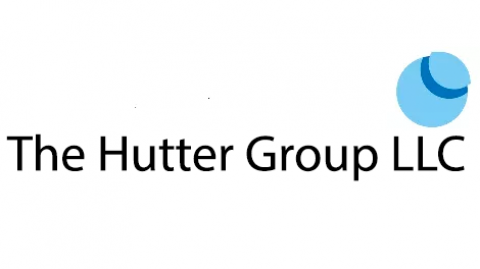
The Takeaway: In the 4th post in this Strategic Patenting Series, a case study is presented of a company that created durable market-making patent protection for a successful consumer product innovation using a disciplined patenting strategy. The strategic patenting efforts of Procter & Gamble undertook with its market-leading Swiffer Wet Jet® floor cleaning system allowed the company to create strong protection of the function of the basic product. This, in turn, resulted in protection of the underlying consumer benefits provided by this innovative floor cleaning system, a fact that allowed the company to prevent functional aspects of its system from being included in knock-off products. Moveover, P&G leveraged its ongoing consumer insights to continue to grow its patent portfolio. In short, the company’s successful strategic patenting efforts have “made it cheaper to go through them than around them,” thus contributing to its market leadership for this innovation for the past 15 years.
The Long Story: In a previous blog post in this multi-part Strategic Patenting Series, I explained how the vast majority of innovators fail to maximize the full scope of the value proposition of their innovations in the marketplace. In short, the missing piece in most patenting efforts is that that most patentees (and their patent attorneys) focus on the features of an invention, when the real value of innovative new product to a lies in the benefits that are provided to the consumer by the product’s innovation. By not capturing this broader value in the form of patent protection, the innovator leaves herself open to competitors who can leverage her hard work to provide consumers with a product that solves the same consumer need with the same functionality but that does not infringe the innovator’s patent rights. Notably, this competitive product is likely available at a lower cost, thus putting the innovator in an even worse position because, although it is now participating in a price eroded marketplace.
After identifying the reason why so many patents fail to provide the expected competitive protection to their owners, we can now talk about the solution by examining how one company, Procter & Gamble, got it right with a major product innovation: the Swiffer Wet Jet® mopping system. As we will see from this example, successful strategic patenting will allow an innovator—in this case, the company that created a wholly new market that re-defined how a large segment of consumers mopped their floors—can “make it cheaper for someone to go through them than around them.”
Prior to the late 1990’s only 4 types of mopping techniques existed, each of which was ages-old: a sponge mop, a cotton “Navy” mop, a rag placed on the end of a stick and a person on her hands and knees. Since the first two methods required reuse of both the cleaning implement (i.e., the “mop head”), users found themselves “cleaning” with dirty water unless they rinsed the mop head between each pass on the floor. Even if they performed the very inconvenient (and likely impractical) step of rinsing the mop head so frequently, it was virtually impossible to get the mop head really clean with any form of rinse. These mop heads also lent themselves to bacterial growth between uses, which exacerbated the problem of cleaning with an unsanitary mop head. While use of a rag, either when placed at the end of a stick or used by a person on her hands and knees, allowed more sanitary cleaning, these methods were inconvenient and increasingly less suitable in a modern household environment.
This was the state of the market place when P&G introduced the Swiffer Wet Jet mopping system. Unquestionably, this product line was a new innovation: gone were the dirty mop head and water that were now replaced with a more sanitary method to clean floors. With this new market P&G initiated with its mopping system innovation, the company created a highly lucrative revenue stream that has continued for many years. And, not only was the consumer pain of cleaning with unsanitary implements and dirty water, users could visually see when the cleaning pad had to be changed, a fact which no doubt further bolstered confidence that the surfaces were really clean. P&G’s innovation also allowed the user to use an appropriately formulated cleaning solution that further ensured cleaning confidence. While these, as well as other features, of the Swiffer Wet Jet mopping system were novel over prior mopping methods and devices, each of these aspects of this product provided individual benefits that addressed the underlying consumer need. Moreover, collectively, these features provided an overall benefit to the consumer of instilling confidence that when she cleaned the floor with the P&G system it really was clean.
The Swiffer product line has been a huge business for P&G for many years, and consumers have been willing to pay premium prices for this product, especially in the form of recurring revenue from cleaning pad and solution refills. Notably, the willingness of consumers to pay more for the Wet Jet mopping system centered not on the features of the mop, the refill, the pad etc., but also on the functional benefits the innovation provides in use. While competition did appear over the years, these alternative products have trailed the Wet Jet in sales, even though they are priced lower. Certainly, much of P&G’s success can be attributed to the company’s branding and marketing expertise, but I think the patent team deserves a good portion of the credit because, without their successful strategic patenting, competitors would have introduced not only the lesser-performing alternative products, but also likely knock-offs of the functional aspects of the Wet Jet system.
P&G has filed dozens of patents for Swiffer over the years, many of which serve as examples of highly competent strategic patenting. One of the earliest, U.S. Patent No. 6.003,191—filed in 1996—illustrates my point very well:

Claim 1 of this patent refers to the disposable absorbent pad that serves as the feature that provides the mop’s benefit of ensuring a clean “mop head” with each use. Referring to the diagram, in Part A (marked with red lines), we see that the first part of the claim covers “old-fashioned mops,” which, of course, were not patentable in 1996. In Part B, we see phrasing that may, at first, seem confusing to those not well-versed in the somewhat arcane art of patent drafting. Part B of the claim is written in functional language the effectively states that the absorbent pad pulls water away from the surface of the pad and is able to retain the dirty water in the pad even when a user exerts pressure during mopping. Significantly, this is a functionality that likely defines the performance that makes the disposable pad suitable for use; in other words, if the dirty water was not retained in the pad during use, the pad would not do the job. That competitors could not figure a way around this protected functionality is demonstrated by the fact that, until recently, no “generic” Wet Jet mopping pads were available. I can report from personal experience that these generic pads are unquestionably designed to avoid infringement of Part B of this patent. However, these substitute pads do not function as well as the branded—and still patented—P&G version of the pads, thus requiring users like me to make a trade-off between effectiveness and price. So, while P&G now faces competition, the presence of strategic patents means that competitors cannot sell a truly knock-off product, which means that P&G will continue making lots of money from its Wet Jet pads for several more years.
Other functional features were also claimed to bolster the scope of protection for the Wet Jet mopping system. For example, US Patent No. 6,663,306 claims the speed of and shape at which the cleaning solution spray exits the sprayer. This functionality appears to define some aspect of the cleaning effectiveness provided by the system. Additionally, P&G has generated patents for other functionality of the Wet Jet system in the form of the disposable cleaning solution container that, through a patented connection, provides the cleaning solution to the user. As of yet, I have not seen a “generic” version of the Wet Jet refill in the market and, given the number of “hacks” on YouTube, there would appear to be a market opportunity for such a knock-off product. My informal review indicates that, to date, P&G has obtained at least 78 patents on the original Swiffer innovation, which certainly would make it difficult for even the most sophisticated competitor to design a product that provides the same consumer benefits.
While P&G’s strategic patenting efforts have impressively prevented competition for many years, I should also be noted that both the disposable pad and refill bottle patents are focused directly on aspects of the Wet Jet mopping system that drive recurring revenue to the company. Indeed, the company’s strategy aligns directly with the classic “razor-razorblades” business model where both the “razor” and “razorblades” patents are strategically placed so as to avoid not only products that provide the same innovation, but also to prevent knock-offs of “razorblades” that will work in the razor.
One additional aspect of the Swiffer Wet Jet system portfolio that I find impressive is many follow-on patents that P&G has filed over the years. These subsequent patents not only covered additional product features that aligned with various system upgrades over the years, they addressed consumer benefits. For example, a scrubbing strip was patented in US Patent No. 8,250,700, likely because consumers at some time expressed a preference for such a feature. While it could be contended that such a feature could have been added by any competitor that sought to develop patentable improvements that could be used to get a leg up on P&G, this does not normally happen. Companies like P&G that are actually selling a product continually develop consumer insights from their ongoing marketing and sales efforts that are unlikely to be recognized by competitors that do not possess the same insider knowledge. These insights can then be leveraged to generate further functional patent protection that can allow the innovator to keep competitors out of the same market for many years to come. Significantly, successful follow-on strategic patent strategy like that of P&G requires discipline and continued coordination between the innovator’s business and patent teams, but we see from the Swiffer Wet Jet case study that this strategy can prove to be very lucrative when executed well.
I hope readers have found this “Monday Morning Quarterbacking” example of a strategic patenting effort helpful. In a subsequent post, I will provide a forward-looking example of strategic patenting using a hypothetical medical device example. In the meantime, please do not hesitate to contact me if you would like to discuss my thoughts on how innovative companies can generate and maximizing value from strategic patenting.
(image credit: http://www.bankonyourself.com/)



What a great article Jackie!
Thank you for posting this insightful and well written piece. Concisely you show how the business objectives, paired with strategic thinking can result in IP that protects innovation.
Your article shows the synergy and seamless joining that must exist between the strategic thinking, business operation, and patent practices of a business- they are mutually supportive. When they are not, even superbly crafted claims in absence of a business strategy will be limited in their scope.
You have also debunked the myth that just because part of a claim appears or sounds at first blush “broad”- because it recites old practices or technologies- it does not mean it lacks novelty.
This is often how a patent is evaluated in mainstream media.
Many People criticize the US system on this point, but from my experience four different experts might have just as many opinions about what a particular claims covers. I think that only shows that good patent attorneys know what they are doing.